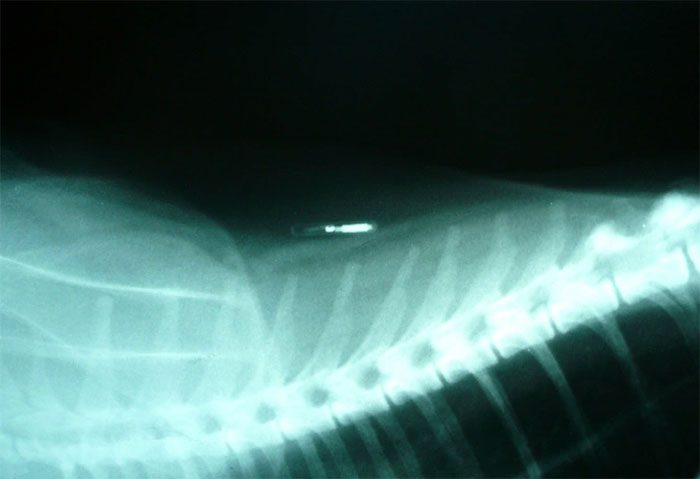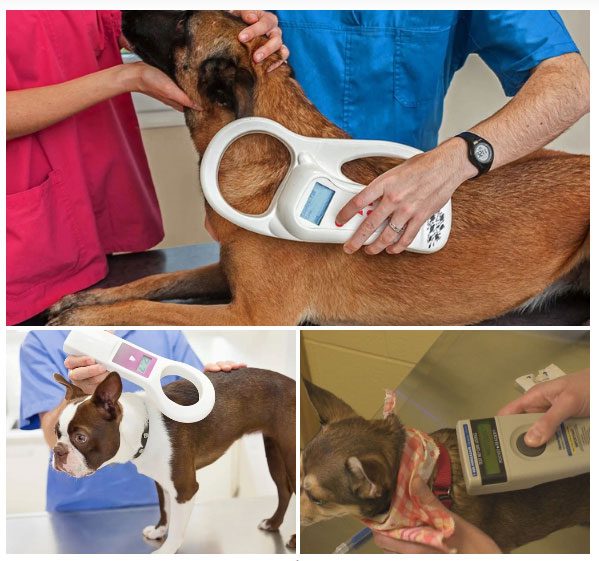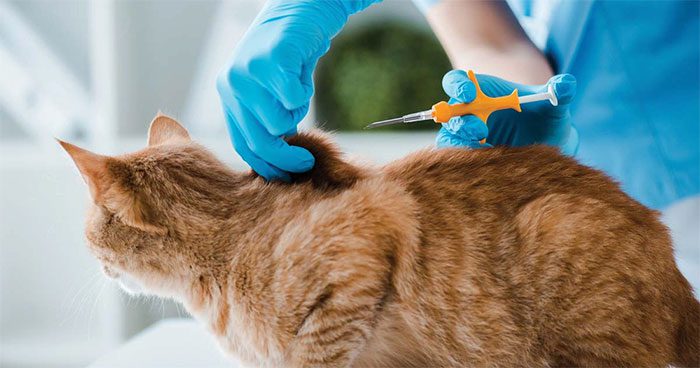In many countries, microchipping pets is quite common, and even mandatory.
The Department of Agriculture and Rural Development in Ho Chi Minh City is proposing that pet owners must register their dogs and cats with the local People’s Committee and is encouraging households to microchip their pets for better information management.
Microchipping Dogs from 8 Weeks Old

The type of chip used for pets – (Photo: WIKIMEDIA).
Currently, the most commonly used chip for pets in many countries is the microchip, a small electronic chip about the size of a grain of rice, utilizing radio frequency identification (RFID) technology.
Each RFID device consists of two components: a reader device and a transmitter that emits a unique identification code. With this identification code, veterinary authorities and management agencies can compile various information such as the owner’s address, phone number, and email, as well as the pet’s name, breed, and vaccination status.
In the UK, according to regulations effective since 2016, dogs over 8 weeks old must be microchipped. Starting from June 2024, the country plans to extend this requirement to cats over 20 weeks old. Those who fail to comply may face fines.
In the European Union (EU), most countries require microchipping for dogs, while the requirements for cats and other pets vary by country. Some nations have additional regulations regarding the locations and methods for selling pets to protect both owners and animal rights.

Injecting the chip into the pet’s body and the location of the chip – (Photo: TRACTIVE).
The International Organization for Standardization (ISO) has issued specifications for standardized microchips for pets, which are accepted by most countries. ISO-approved chips have a 15-digit identification number, while non-ISO chips may have 9 or 10 digits.
According to HowStuffWorks, microchipping pets is a quick and minimally invasive procedure, typically performed by veterinarians using a syringe between the shoulder blades of the dog. The passive chip resides under the dog’s skin and only transmits its identification code when scanned by a reader.
Indirectly Reducing Dog and Cat Bites
A study from the University of Florida reveals that 1 in 3 pets will eventually go missing. Data retrieved from microchips indicates a higher rate of pets being reunited with their owners. For instance, surveys of animal rescue shelters in the United States, Italy, and Israel show that up to 74% of microchipped pets are returned to their owners when lost.
As for cats, a study published in the Journal of the American Veterinary Medical Association (JAVMA) indicates that microchipped cats are 21 times more likely to be reunited with their owners compared to non-microchipped cats.

Retrieving the identification code of a dog after being microchipped – (Photo: GETTY IMAGES).
Experts suggest that microchipping pets indirectly reduces the number of dog and cat bite incidents.
A study published by the WWF indicates that microchipping helps veterinary centers and regulatory agencies obtain data about pets, especially regarding vaccination information. Furthermore, increasing the likelihood of finding lost pets also reduces the number of free-roaming dogs and cats.
In the U.S., the cost of microchipping dogs and cats at veterinary centers typically ranges from $25 to $60 (approximately 600,000 to 1.4 million VND). Some animal shelters may offer microchipping for as low as $5 (about 120,000 VND).

Microchipping a cat – (Photo: VET TIMES)
Does microchipping affect pet health? According to the American Veterinary Medical Association, most cases of microchipped dogs and cats do not experience health issues. A small number of pets may have mild side effects, such as slight swelling, redness, or very rarely, localized infections at the injection site.
Although rare, microchips can sometimes malfunction. This may be due to manufacturing defects or damage after implantation. Experts advise pet owners to have the microchip checked regularly at veterinary centers to ensure it is functioning properly.





















































